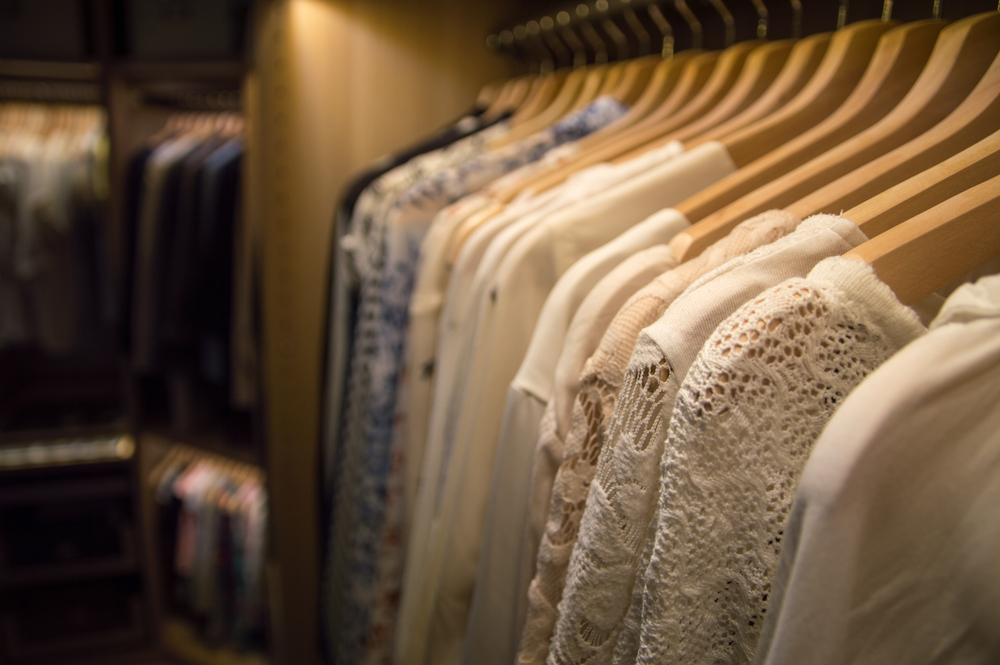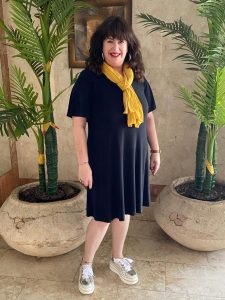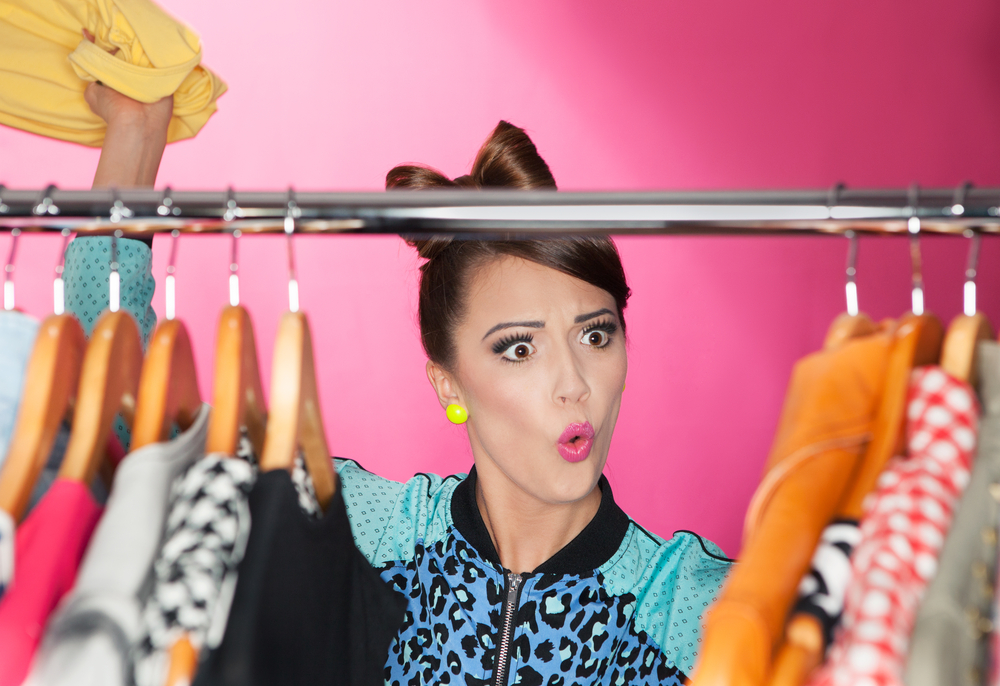
Shop Your Closet!
Written by Ros Bakst
We’ve all done this – me included. We stand in front of a closet full of clothes thinking, “I have nothing to wear!” There are many reasons why this happens, but no matter what the reason, the solution is always the same – we go shopping!
Can you relate?
This can lead to one of several situations:
- You buy exactly what you already have in your closet, maybe in a different color or size.
- You don’t understand why you bought new items and you still feel that you have nothing to wear.
- You walk around the stores and see nothing new to buy (because your eye sees exactly what it’s used to seeing), then come home and say there is nothing in the stores…
Frustration leads to even further frustration. But the solution to this problem is actually right in front of your nose. SHOP YOUR CLOSET!
As a stylist, I love to browse and shop in stores. It’s a huge part of my life, which was cut off for me this year as my mother passed away six months ago. Since the custom is to not buy any new clothes during the first year of mourning, I found myself in the position of having to do exactly what I advise my clients to do – shop my closet.
So, what does it mean to ‘shop your closet’?
Shopping your closet means creating new outfits from clothing and accessories that you already own.
There is an obvious benefit, but it’s still worth mentioning because it’s important. When you shop your closet, you’ll buy fewer clothes. It doesn’t matter why you have chosen not to go shopping at this time – whether it’s because you’re unable to buy new clothes, or any other reason – when you choose not to buy new, you will save a considerable amount of money.
So this is also especially important when you are on a budget.
But where to start? Unless you are a minimalist and have been for many years, you probably have clothes in your closet that you don’t even remember buying. And you’d be amazed at how much is in there that you never actually wear. So the first step is to go through your closet and look at what you never wear, and probably shouldn’t hang on to. Keeping track of what you have worn and looked at and what still needs attention can be hard. One easy (and fun) method that I recommend (and use myself) is every time you wear an outfit, turn the hanger
the other way. If I try something on and I don’t like it or it doesn’t fit, I give it away. If, after a few months, there are items that haven’t been turned, I look at those pieces and decide whether they will stay another month or if it’s time to say goodbye to them.
Right now, between the hot temperatures and many countries being under COVID-19 restrictions, the last thing many of us are thinking about is getting dressed. Since we have the luxury of often being able to work in our pajamas, this is the perfect time to get our closets organized. This way when you go back to working outside the home and being out more in general, you’ll be ready with a closet full of clothes you love to wear, and you’ll know what you need to round out your wardrobe as you head optimistically into the fall season.
So let’s look at the first step in how to shop your closet.
As I mentioned, most of us have a lot of clothes we haven’t worn in years, but we shouldn’t just throw them out! If you can’t repurpose an item, donate it to a charity or thrift shop so someone else can use it.
Next, separate the basics, which are always in season, from the trendy pieces which come and go over time. The reason you want to separate them is that the basic items are your building blocks for creating a strong foundation that can then be paired with almost anything else in your closet.
For every season it is ideal to have up to seven go-to basics. These pieces are at the center of every look. Keep similar items together.
Your basics are pieces like a denim skirt, a black or navy skirt, a simple black dress, layering tanks and shells, a cardigan, etc.
Your trendy pieces are everything else: a skirt with embroidery, a patterned blouse, a tweed jacket, or anything in a bright or bold color. (These should also be kept together in your closet).
Now you can build from your basics, it’s that simple!
There are more tricks out there than you’ve ever imagined. Here are just a few to get you started: With just some simple sewing skills, you can easily alter old stretchy clothes so they fit better, or differently. Tired of a top or dress? Change the sleeves, or spice up a top you’re tired of by changing its neckline. A round-necked shirt might feel boring but it doesn’t take much to turn it into a V-neck, or any other neckline; voila, you have a new top. Don’t want to alter it? You can add trimmings or bedazzle it (in many cases, no sewing required).
Got a summery maxi dress that you love? Put a chunky sweater over it. Then, add tights and boots and it’s ready to be worn again in the winter.
Finally, mix and match and create new outfits. For example, take a basic black dress which is something that every woman needs in her closet. Find the right one that gives you loads of confidence, fits your body type, and that can be worn in a variety of ways. A black dress is easy to mix and match with accessories that will change its look from day wear to evening wear easily. Yes, one simple dress can do ALL that!
Take a look at the photos of my favorite black dress and how I have changed its look to give me four different outfits for different occasions.
1) For day wear and running an errand or going shopping.

2) Off to a meeting, my sheitel/wig is now on and I have wrapped a scarf in mustard yellow and changed shoes.

3) This look I can carry off in the heat by adding baggy cool trousers and pulling my sheitel/wig into a low ponytail, adding sunglasses and I’m ready for a day out with my family.

4) A wedding/bar mitzvah look, with a beautiful silver head wrap, a cute lace jacket tied at the front, and silver bling heels. Changing your makeup to match the outfit helps complete the look.

Transform your closet by thinking “out of the box” and you won’t have to buy new clothes again for quite a while.
In future articles, we’ll take a deeper dive into mixing colors, as well as using the color wheel. I hope this introduction to shopping your closet has given you some ideas to get you started. I’d love to hear about your successes!

Related Articles
Related
No Hiding Allowed – Tall Is Beautiful
Myth: If you’re tall, you need to hide and deemphasize your height as much as possible. Truth: If you’re tall, you need to rock your height like no one’s business.In the fashion world, there are three categories of height for women. Petite means 5’3” or shorter....
No Hiding Allowed – Seasonal Colors Out of Season
Myth: If you wear a color that isn’t right for the season, you’ll look strange and out of style. Truth: If a color flatters you, then it’s in season for you and you’ll look great.Many times I’ve seen people ask on social media about wearing spring or summer colors in...
No Hiding Allowed – 2 Looks for Mommies
Myth: If you’re a mother, you need to only wear clothes that are casual and comfortable and not stylish or flattering.. Truth: If you’re a mother, you absolutely should consider wearing clothes that are fitted and flattering as well as being casual and...
